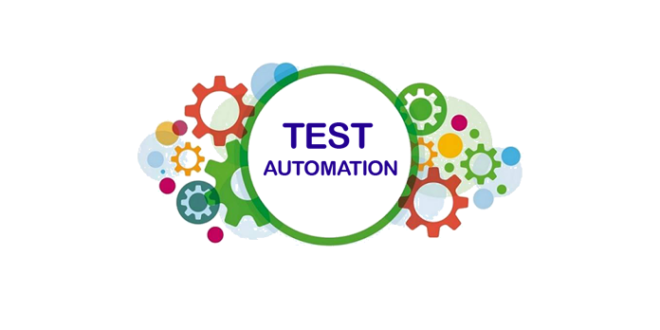From Manual to Automated Screening: A Comprehensive Overview to Transitioning Efficiently and Successfully
In the world of software program screening, the change from manual to automated processes has actually ended up being a significantly essential shift for companies seeking to enhance effectiveness and accuracy in their screening methods. The trip from handbook to automated screening is not without its difficulties, however when come close to tactically and with a clear strategy in mind, the benefits can be considerable.
Benefits of Automated Testing
Automated screening offers many advantages, improving effectiveness and precision in software development processes. One key benefit is the considerable reduction in testing time. Automated tests can be run at the same time on multiple devices and operating systems, considerably accelerating the testing phase contrasted to manual screening. This enhanced efficiency enables faster responses on the quality of the software application, allowing developers to determine and resolve concerns promptly.
Additionally, automated screening guarantees a greater degree of accuracy in finding issues. Because automated examinations follow predefined manuscripts, human mistake is lessened, bring about more trustworthy examination outcomes. Consistency in screening is likewise improved, as automated tests carry out the same steps precisely each time they are run. This consistency is important in ensuring that all functionalities of the software application are extensively examined, minimizing the possibility of unseen insects sliding through to production.
Picking the Right Tools
Firstly, examine your requirements and objectives. Comprehend the scope of your project, the modern technologies included, and the capability of your team. This evaluation will assist you establish the capacities and attributes you call for in your screening devices.
Secondly, take into consideration the compatibility of the devices with your existing procedures and systems. Smooth integration with your existing software growth lifecycle is necessary to ensure a smooth transition to automation.
In addition, review the scalability and adaptability of the tools. As your screening requires evolve, the tools ought to be able to adjust and accommodate adjustments efficiently.
Last but not least, factor in the support and neighborhood around the tools. When applying automated testing, durable assistance and an active customer neighborhood can offer important sources and support. By carefully taking into consideration these elements, you can select the right devices that align with your demands and established the phase for an effective transition to automated testing.
Writing Effective Test Scripts

When crafting test manuscripts, it is necessary to consider the particular needs of the software application being examined and make certain that the scripts attend to all critical capabilities. Clear and detailed naming conventions for examination scripts and examination situations can improve readability and maintainability. In addition, integrating error handling devices within the test manuscripts can assist in identifying and resolving concerns immediately.
In addition, arranging examination manuscripts right into modular parts can boost reusability and scalability, decreasing redundancy and boosting performance in test script upkeep. Routine reviews and updates to evaluate scripts are vital to equal developing software application demands and performances. By following these principles, testers can produce effective and durable examination scripts that contribute substantially to the success of automated testing procedures.
Integrating Automation Into Workflows
By flawlessly integrating automated screening devices like Selenium or Appium into the software program growth lifecycle, teams can attain faster comments on code modifications, leading to quicker insect detection and resolution. This combination permits for continuous testing throughout the advancement procedure, guaranteeing that any type of problems are determined early on, resulting in greater software program top quality. Correct integration of automation tools needs cooperation between advancement, screening, and operations teams to develop a unified workflow that optimizes effectiveness and performance in supplying high-quality software application items.
Making Sure a Smooth Shift
Effectively transitioning to automated testing includes precise preparation and mindful implementation to take full advantage of and reduce disruptions performance in the software application development procedure - automation testing. To make sure a smooth transition, it is necessary to begin by carrying out a complete evaluation of the existing testing processes and identifying areas where automation can bring the most considerable advantages. Engaging with all stakeholders early while doing so, consisting of developers, testers, and job supervisors, is vital for garnering assistance and buy-in for the automation initiative
Communication is vital during this shift stage. Clear interaction of the goals, benefits, and assumptions of automated screening assists to manage any resistance or problems that might emerge. Additionally, supplying investigate this site appropriate training and sources for staff member to upskill in automation tools and methods is essential for making certain an effective shift.

Final Thought
To conclude, transitioning from manual to automated screening supplies many benefits, consisting of enhanced efficiency and integrity. By selecting the ideal tools, creating efficient test manuscripts, and integrating automation flawlessly right into operations, organizations can ensure a effective and smooth shift. It is important to welcome automation as a valuable property in software testing procedures to improve general top quality and efficiency.
In the world of software program testing, the shift from handbook to automated procedures has actually become a significantly crucial change for companies seeking to enhance performance and accuracy in their screening practices. Automated tests can be run simultaneously on multiple devices and running systems, considerably speeding up the screening stage compared to manual screening. Uniformity in testing is additionally boosted, as automated tests perform the exact same actions precisely each time they are run.To make sure the successful application of chosen testing devices, the production of reliable examination scripts plays an important function in verifying the functionality and efficiency of automated procedures - automation testing. By complying with these concepts, testers can develop reliable and robust examination manuscripts that contribute substantially to the success of automated testing processes